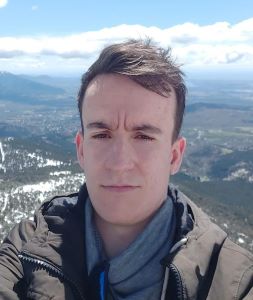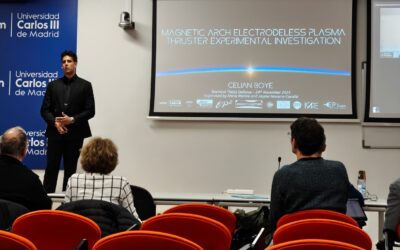
Greetings! My name is Borja Bayón Buján, and I just joined the ZARATHUSTRA team as a Research Assistant. I am currently finishing UC3M’s Master in Space Engineering (MiSE) and as part of my Final Master Thesis I will use data-driven methods to analyze oscillations present on plasma thruster discharges. Allow me to give you a glimpse into this exciting field of work!
Currently my focus is on a rhythmic low-frequency oscillation known as the Breathing Mode, present and very well-studied in Hall Effect Thrusters (HETs). The familiar name comes from the consequences of this mode: instead of ejecting a constant stream of plasma, HETs exhaust visibly varies with time in an oscillating manner, and this can be visualized as the thruster exhaling and inhaling the plasma like our lungs do with air. This breathing can sometimes take over the whole dynamics of the thruster, as plasma in the exhaust disappears as the HET “inhales”; it also complicates the design of the thruster’s electrical subsystem because of the oscillations in current.
The breathing mode is usually linked to neutral depletion in the anode, but the mechanisms or wherethe energy for the instability that starts the mode come from are still not fully known. For this reason,the goal of my TFM is to obtain a model based on a system of differential equations that captures thebreathing mode not only in a fixed operating regime, but also as a function of parameters like discharge voltage and mass flow rate. As opposed to current models, which typically approximate the breathing mode as a variant of the Lotka-Volterra equations (used in biology in modelling predator-prey dynamics) and then fit the data, my approach would use the data first to find the optimal model that bestdescribes it through the use of Machine Learning techniques and guided by our current understanding of the problem.
This will be accomplished thanks to the joint use of large amounts of data coming from established EP2 simulations, algorithms like the Sparse Identification of Non-linear Dynamics (SINDy) for system identification and Reduced Order Modelling methods. Once models are obtained, they will hopefully bring new insights into this ubiquitous part of the Hall Effect Thruster dynamics and allow us to better understand its origin and even get to control it.
I am excited to start to explore this new paradigm of scientific discovery based on data, thinking that one day the algorithms that I develop will help to understand more complex thruster designs within the ZARATHUSTRA project (like the electrodeless Helicon Plasma Thruster and Magnetic Arch Thruster) and help expand the limits of electric propulsion and space exploration!


